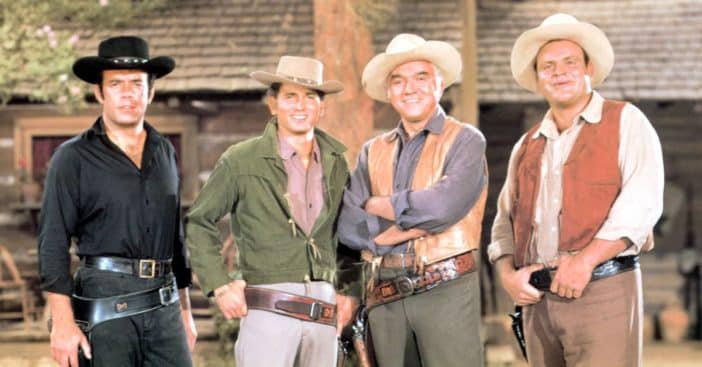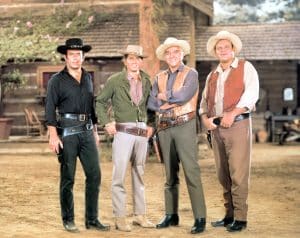
Television has not seen – and likely won’t see again – the likes of Bonanza. Today, programs are canceled after one season – two if fortune and finance smile upon them. But after it premiered on September 12, 1959, 64 years ago, Bonanza stuck around for 431 episodes packed into 14 seasons and established a new kind of television empire.
Merchandise. Posters. Fan clubs. Entire episode plots. Bonanza was everywhere and made stars out of its cast, especially Michael Landon. This powerful locomotive might have chugged on for another decade had it not been for the rural purge, which wiped the slate clean of shows in this setting – but even then, Bonanza did what others could not and stuck along just a bit longer to cement its status as truly exceptional.
‘Bonanza’ changed the television landscape when it premiered over six decades ago

It’s been 64 years since Bonanza premiered. While at first glance, it was another Western in a growing and beloved roster, it took a very deliberately different approach; the location was not the focus, but rather, the family was.
RELATED: ‘Bonanza’ Cast Then And Now 2023
“You always saw stories about family on comedies or on an anthology,” wrote Stephen Battaglio, senior editor for TV Guide magazine, “but Bonanza was the first series that was week-to-week about a family and the troubles it went through. Bonanza was a period drama that attempted to confront contemporary social issues. That was very difficult to do on television. Most shows that tried to do it failed because the sponsors didn’t like it, and the networks were nervous about getting letters.”
These days, it’s solely a money game that networks worry about – less about letters and more about numbers of paper bills. Look no further than Warner Bros. Discovery dropping entire completed films because the loss was calculated to be more profitable. Of course, Bonanza did stimulate some economic decisions – namely, its color filming inspired households to purchase color TVs, the better to watch this unique, family-centered approach to the Western genre. In fact, filming in color grew so expensive, the show was almost canceled. However, RCA, which owned NBC at the time, kept supporting the series to promote the new TV style.
A little something for everyone

Immediately since it premiered, Bonanza was at once something comfortably familiar and excitingly different, a family drama that happened to be a Western, yet with the Cartwright men defying expectations, inspired by their patriarch who had to be a sole parent to his boys.
Cleverly, Bonanza still, in this unique package, offered a diverse taste of varying personalities, so everyone had someone they could feel drawn to. Hoss provided pure, wholesome gentleness. Adam had a good head on his shoulders and could play the straight man against his brothers. Then, of course, there was the most beloved of all, Little Joe, played by Michael Landon.

For Landon, this was the start of his trinity of feel-good television, followed by Little House on the Prairie and tied together with Highway to Heaven. His character still had the big dreams of youth and with just enough daring to see the job done no matter how daunting the odds.
Eventually, however, the odds started to grow too daunting even for Bonanza. One by one, shows fell to the wayside. Several of the most prolific, from The Beverly Hillbillies to Gunsmoke got the axe. The rural purge took out the likes of Lassie and Green Acres and then Westerns fell out of favor. Even so, in typical Bonanza fashion, it held out just a bit longer than that first wave of cancellations, only losing its footing after landing a time slot opposite Maude. The only program to last longer was Gunsmoke, but most of the Bonanza team felt that, after the death of Dan Blocker, Hoss, the show lost something valuable and was ready to end – but not before becoming the first TV show to address the death of a young male character in the show’s plot.

Since it premiered, Bonanza established itself as a perfect recipe for unprecedented success, becoming the first show to stay at the top five of the Nielsen ratings for nine consecutive seasons. Even though some of its records and ratings would be beaten by Gunsmoke, it managed to climb high while breaking the mold in a way no other show has done – and probably will ever do – since.
There’s a reason it’s still celebrated 64 years later – and for more about this exemplary show, including some plots that were entirely recreated in Little House on the Prairie, check out the video below!
